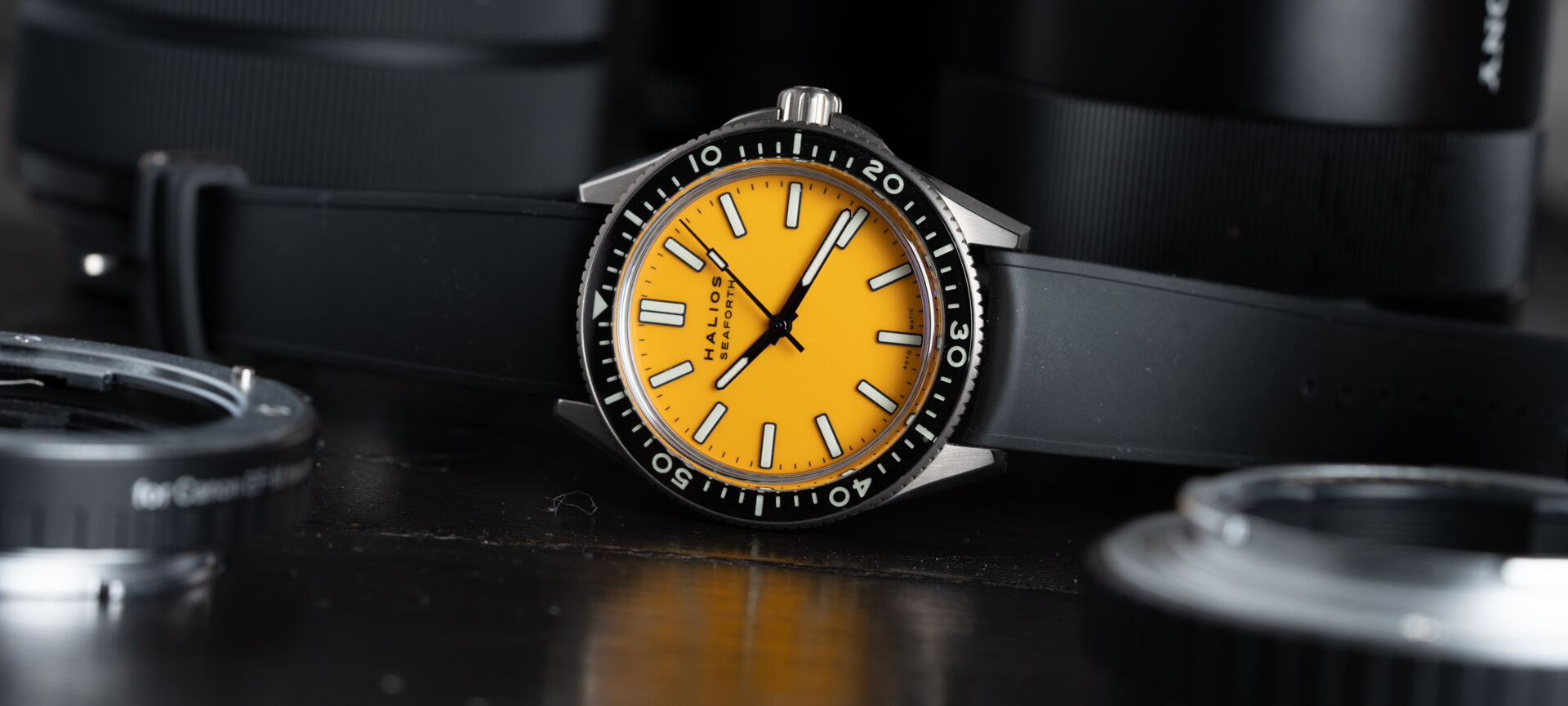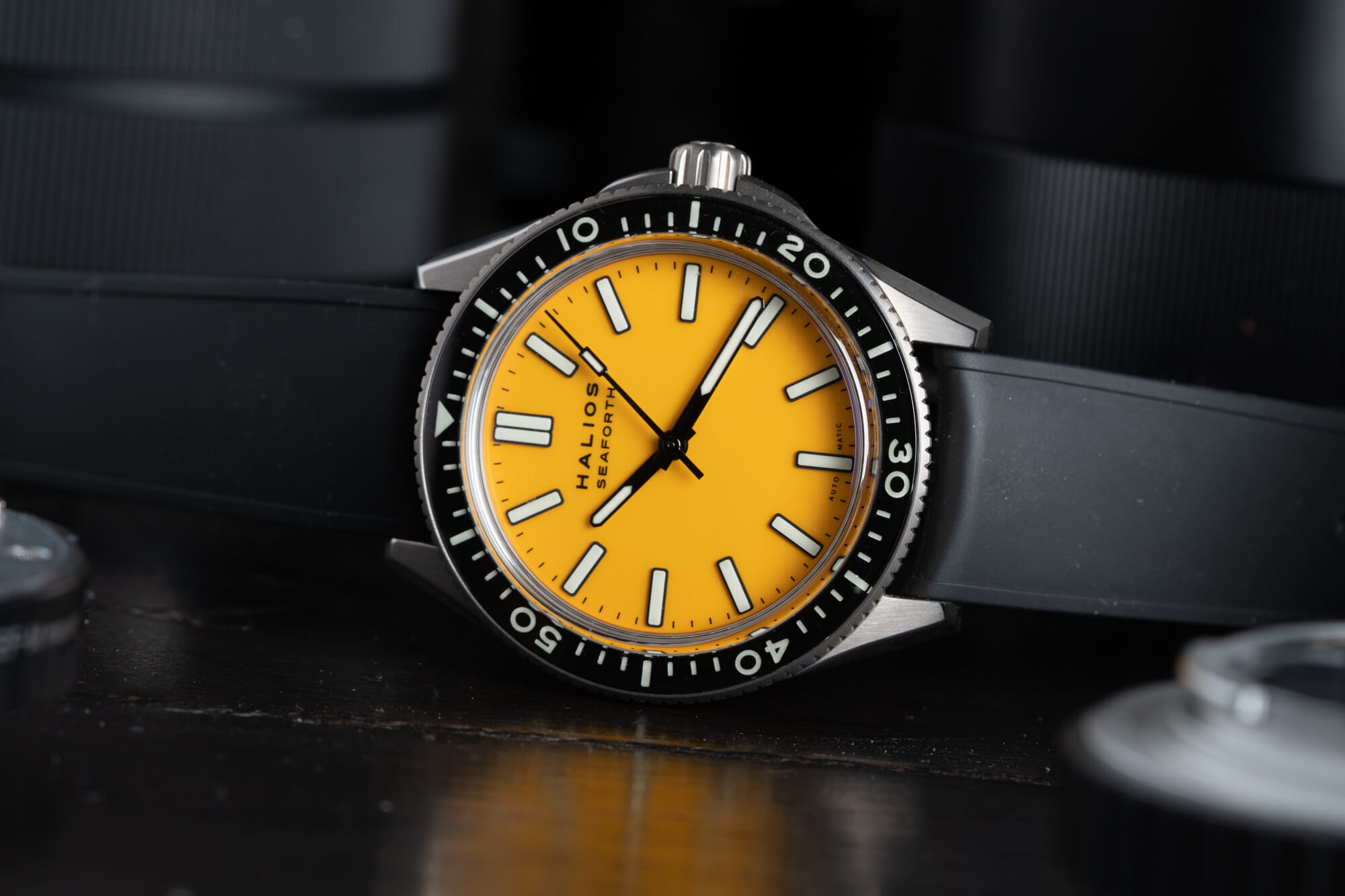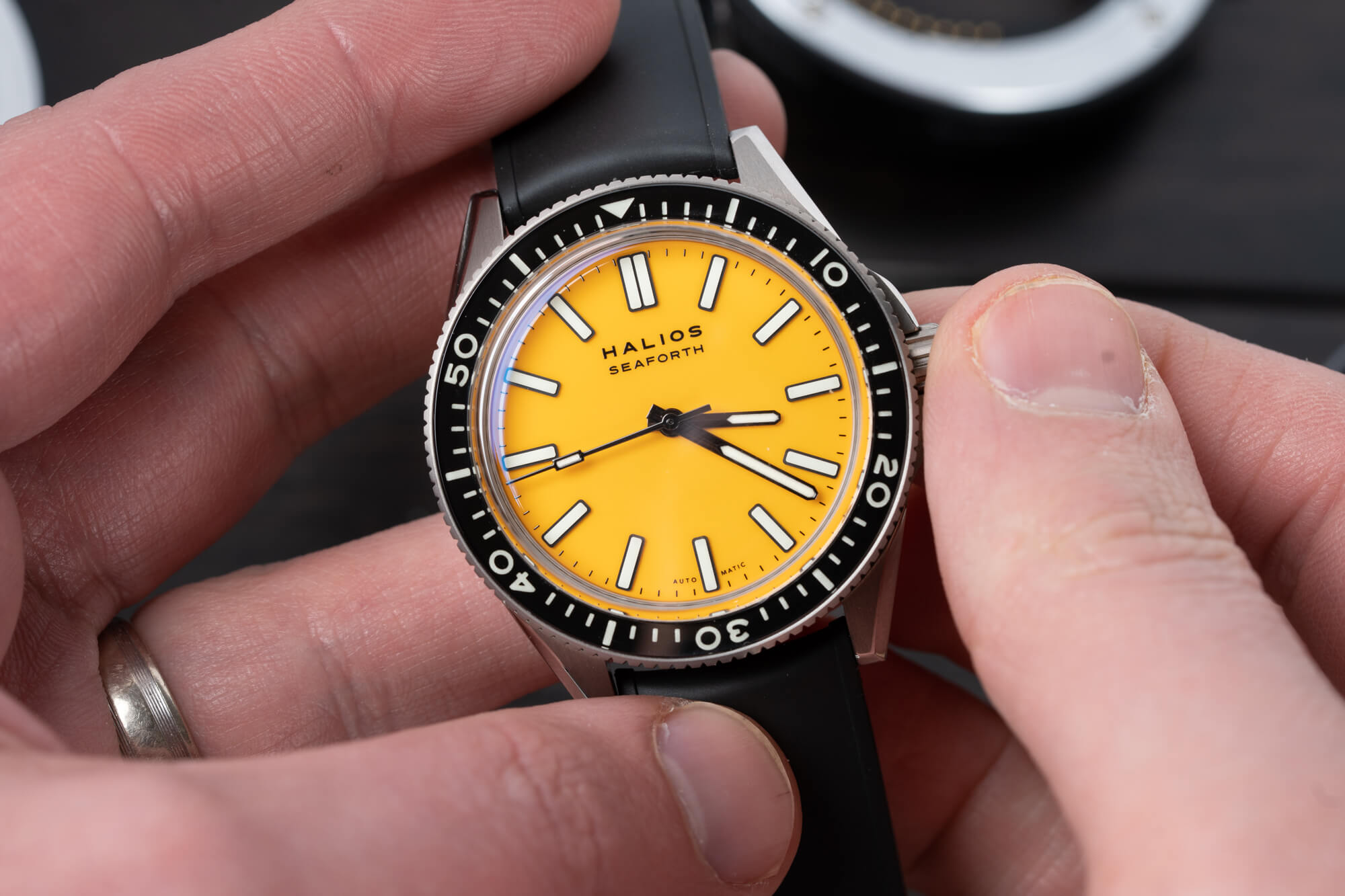 Just like the explosion of TV programming meant more incredible shows than ever, the rapid growth of the microbrand segment has meant more amazing watches than ever. But if you believe in heaven, you have to believe in hell, and with a plethora of good watches comes a plethora of bad watches. As my friend likes to say, though, “More is more and more is better.” It’s a crowded space, and in general, that’s been a good thing.
Just like the explosion of TV programming meant more incredible shows than ever, the rapid growth of the microbrand segment has meant more amazing watches than ever. But if you believe in heaven, you have to believe in hell, and with a plethora of good watches comes a plethora of bad watches. As my friend likes to say, though, “More is more and more is better.” It’s a crowded space, and in general, that’s been a good thing.
We’ve arrived where we are as a result of an increasingly connected global economy. All from the comfort his or her own home, a would-be brand founder can hire a designer to translate a design to CAD renderings, contract with manufacturers to produce the watch, and use a crowdfunding platform to reach an international customer base and finance the bulk of the costs. Add to that the increasing capabilities of manufacturers and increasing availability of higher quality components, and a surfeit of exceptional affordable timepieces seems inevitable.
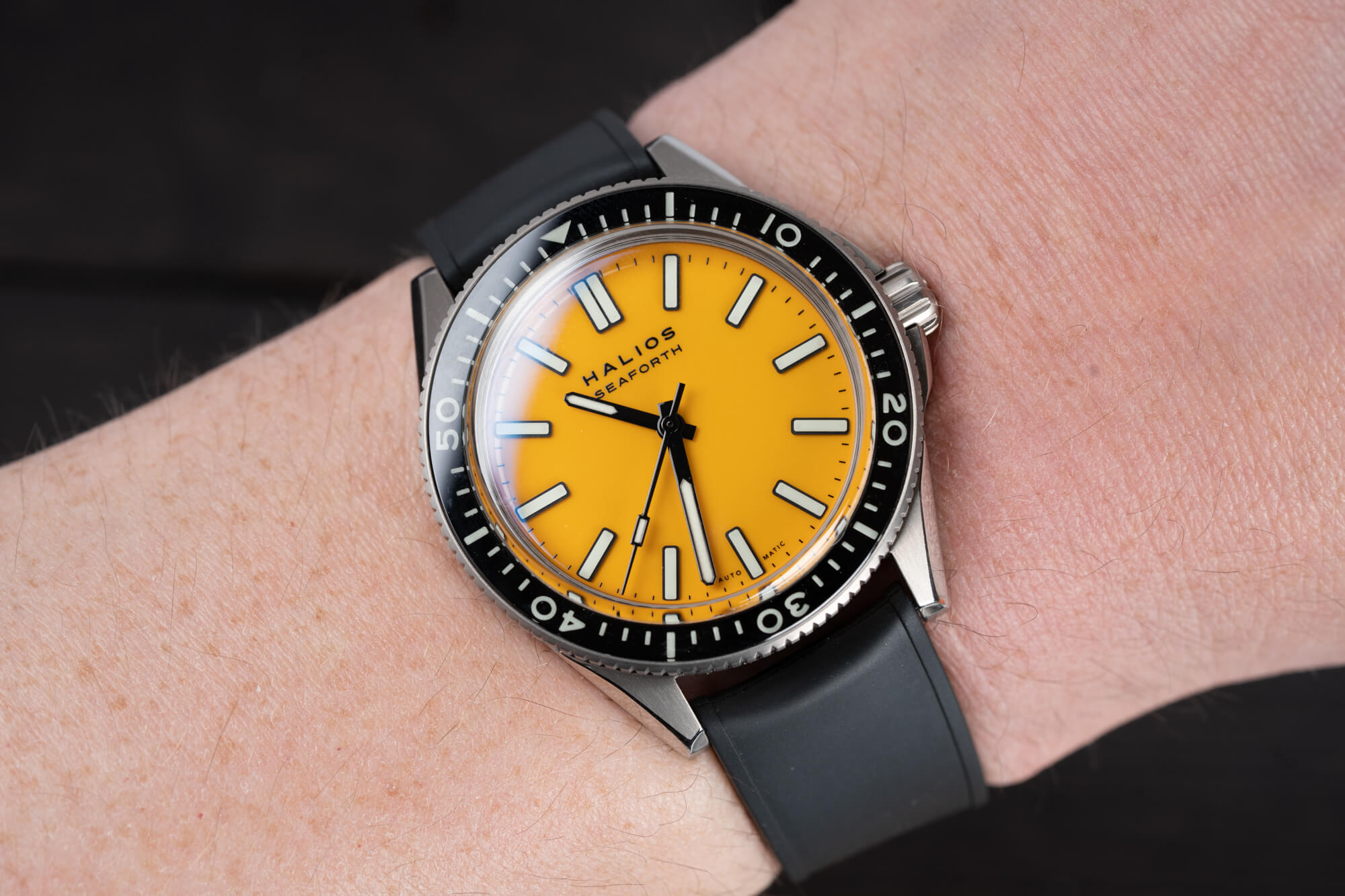 15 years ago, things looked a lot different. Crowdfunding was an unproven approach in its nascency, navigating the manufacturing landscape was a merit badge-worthy achievement, and small brands were limited in their access to components, especially movements (there’s a reason every watch was a 3-hander with a date). It was in this environment that the original microbrands emerged.
15 years ago, things looked a lot different. Crowdfunding was an unproven approach in its nascency, navigating the manufacturing landscape was a merit badge-worthy achievement, and small brands were limited in their access to components, especially movements (there’s a reason every watch was a 3-hander with a date). It was in this environment that the original microbrands emerged.
Among those OG micros (and among the fewer that still remain) was Halios, a Vancouver-based brand founded in 2009 by Jason Lim. Even more impressive than the brand’s longevity is that Lim has managed to create perhaps the only microbrand watch that can be considered iconic: The Halios Seaforth. As the Rolex Submariner, and the Omega Speedmaster, and the Jaeger-LeCoultre Reverso are in the mainstream watch community, the Halios Seaforth is a watch that almost everyone with even a passing interest in microbrand watches has heard of and (in one way or another) reveres. Now in its fourth generation, the Seaforth continues to maintain its status as an icon.
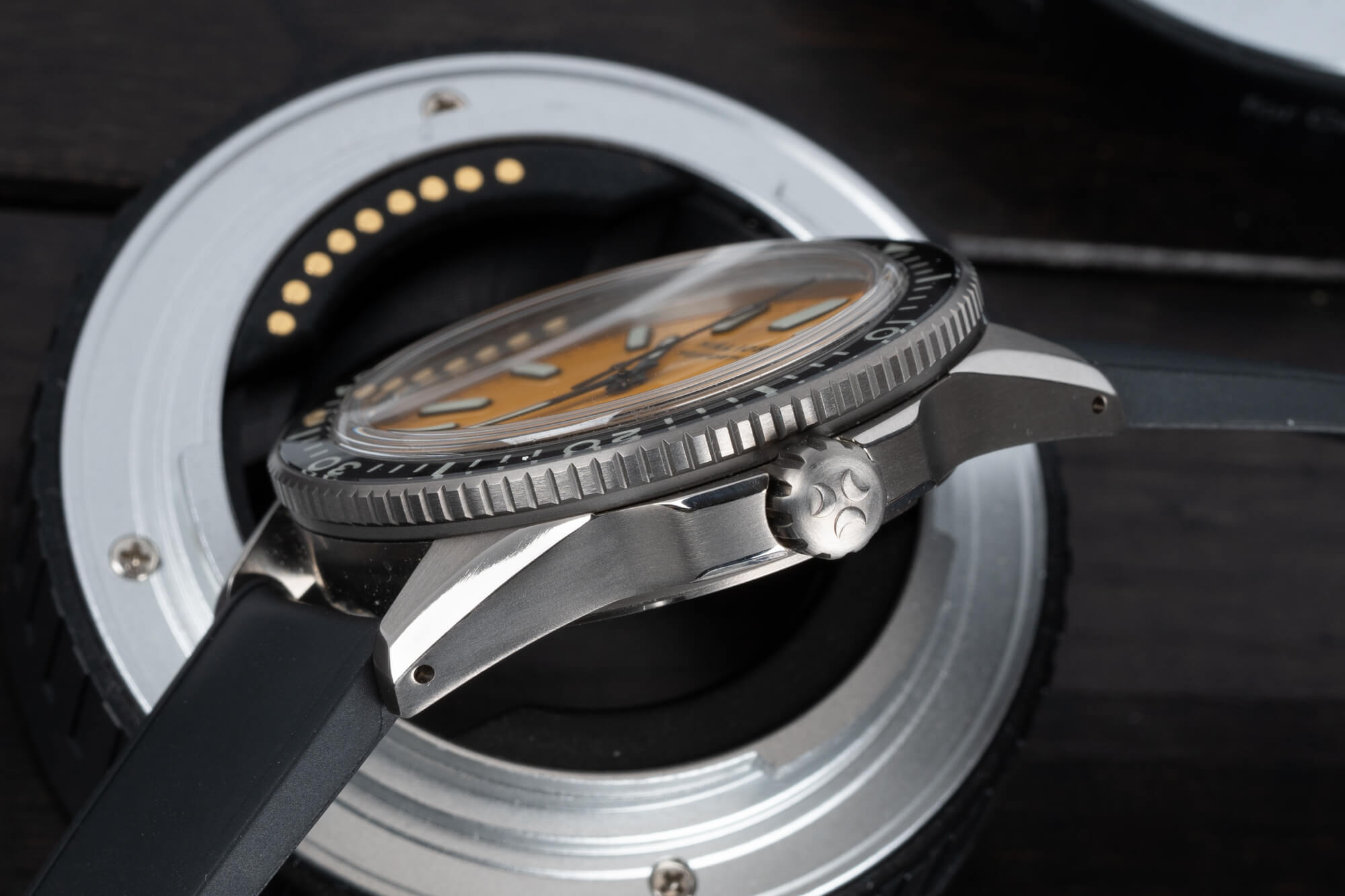 The Halios Seaforth IV introduces a handful of subtle refinements and significant improvements. While stainless steel remains an option, the Seaforth IV is the first generation to be offered in titanium. Certainly, I’ve seen more titanium models out there than steel . This could be because people prefer the warmth of the metal over steel’s colder appearance, titanium’s lighter weight, or just the novelty of a new material in the collection (the Seaforth has also seen a short-lived bronze iteration).
The Halios Seaforth IV introduces a handful of subtle refinements and significant improvements. While stainless steel remains an option, the Seaforth IV is the first generation to be offered in titanium. Certainly, I’ve seen more titanium models out there than steel . This could be because people prefer the warmth of the metal over steel’s colder appearance, titanium’s lighter weight, or just the novelty of a new material in the collection (the Seaforth has also seen a short-lived bronze iteration).
The case measures 40mm-wide with 20mm drilled lugs, dimensions so ideal there’s a podcast named for them. The watch is just 12.4mm-thick including its double-domed AR-coated sapphire crystal, and it has lug-to-lug length of 46.5mm. While the case is predominantly brushed with crisp transitions, the lugs (which point in from the case and angle down to hug the wrist) feature a dramatic polished chamfer along the sides and ends, adding just a touch of flair. When you bring the lugs together with the case dimensions, you get a watch that wears effortlessly and will do for almost any wrist.
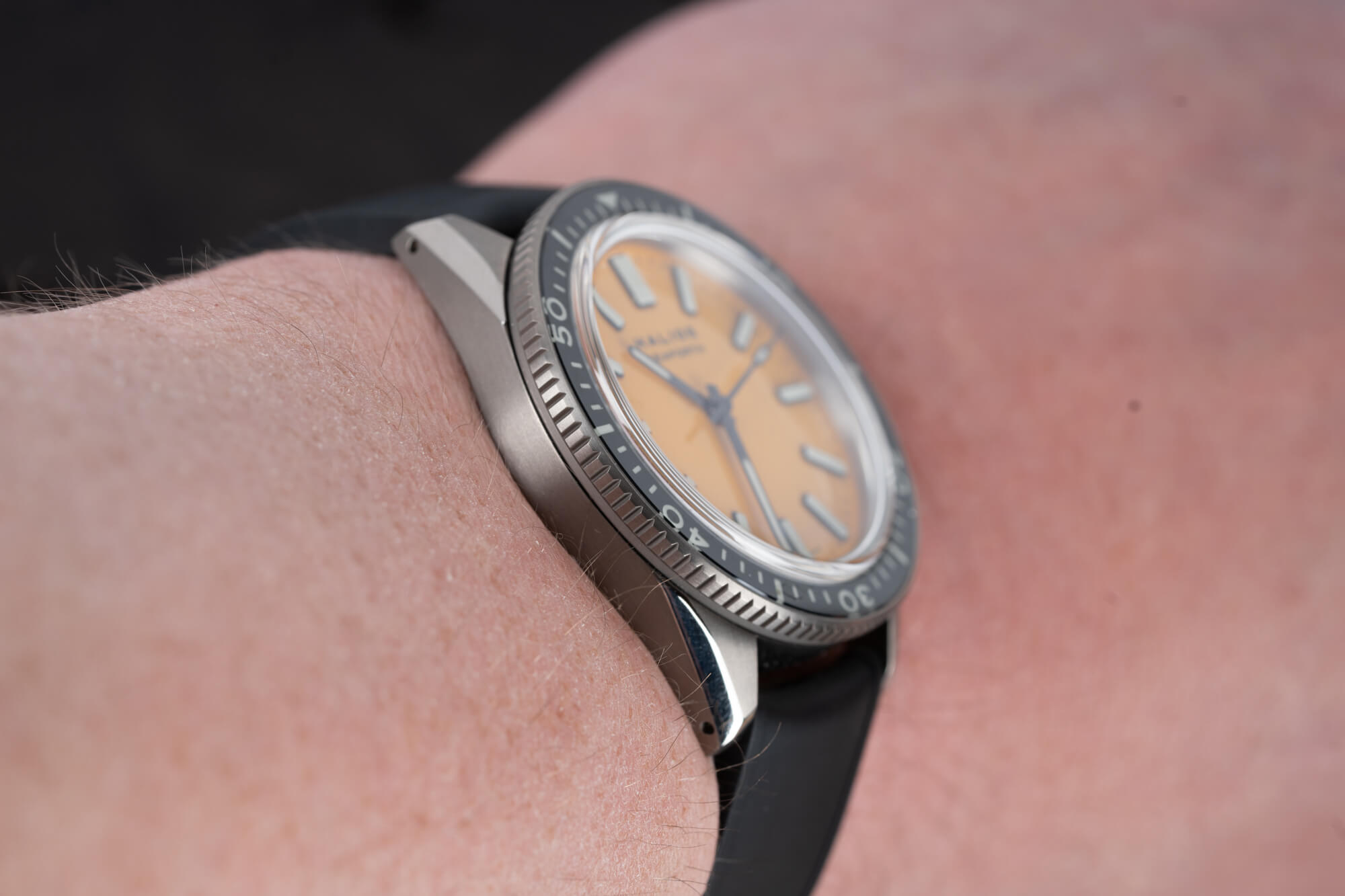 The Seaforth is offered with your choice of three bezels: fully lumed sapphire diver (seen here), fully lumed sapphire 12-hour, or fixed (with the metal matched). The first is similar to the last generation, but with individual minute hashes all the way around. On the other hand, the second is an entirely new option, the previous 12-hour bezels only having been offered in steel. The action on the bezel is simply incredible. Despite not having the most substantial grip, the tension on the 120-click unidirectional bezel is dialed in perfectly to allow easy operation in all conditions. This balance is rare in any watch, much less one that’s priced under $1,000 USD. Note that the rotating bezel has a 0.5mm overhang that does help with getting a grip and brings the diameter to 41mm.
The Seaforth is offered with your choice of three bezels: fully lumed sapphire diver (seen here), fully lumed sapphire 12-hour, or fixed (with the metal matched). The first is similar to the last generation, but with individual minute hashes all the way around. On the other hand, the second is an entirely new option, the previous 12-hour bezels only having been offered in steel. The action on the bezel is simply incredible. Despite not having the most substantial grip, the tension on the 120-click unidirectional bezel is dialed in perfectly to allow easy operation in all conditions. This balance is rare in any watch, much less one that’s priced under $1,000 USD. Note that the rotating bezel has a 0.5mm overhang that does help with getting a grip and brings the diameter to 41mm.
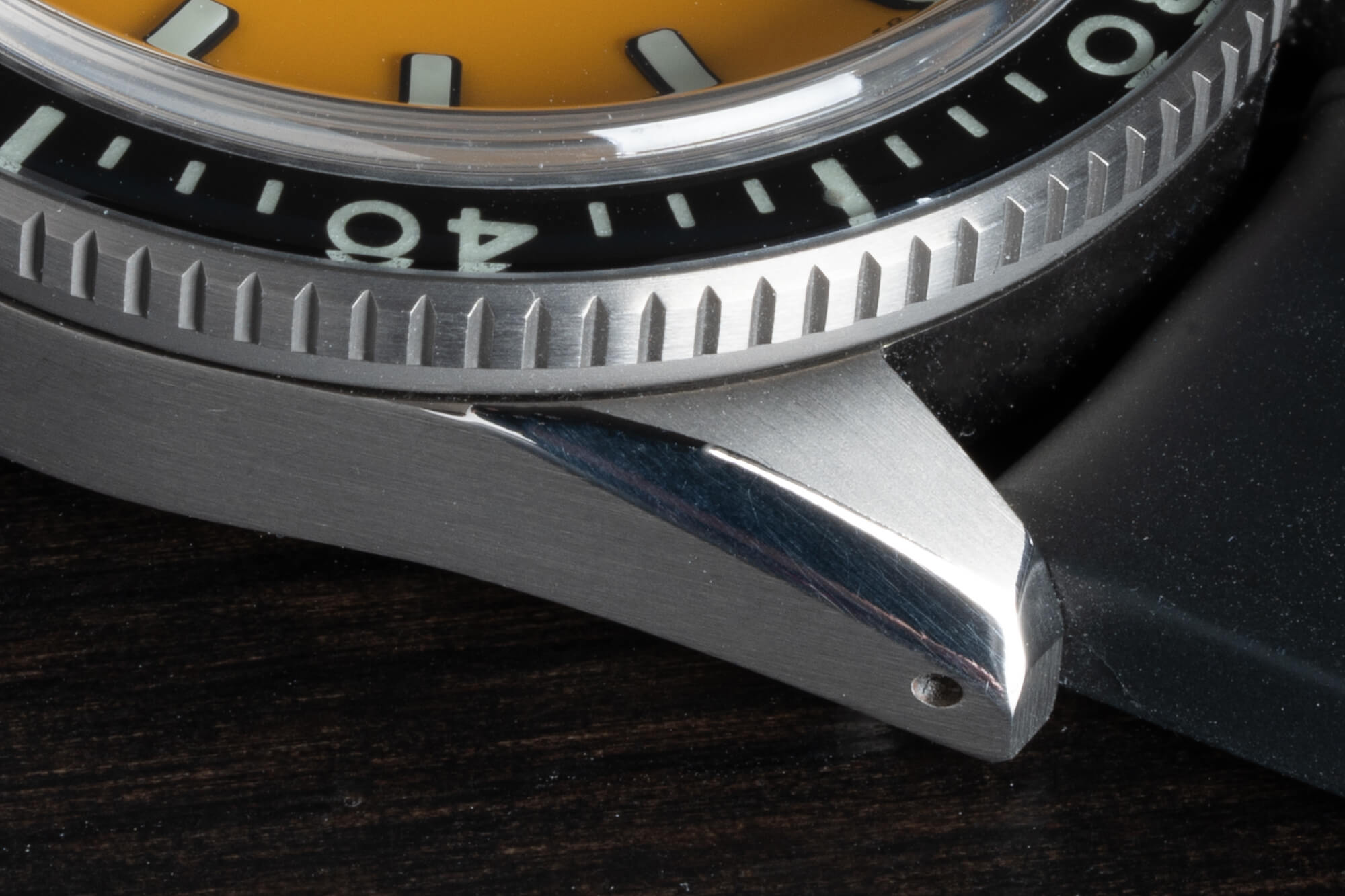 The case is completed with a easy-to-grip branded screw-down crown that helps with 200 meters of water resistance. Unfortunately, this is the only spot of trouble I’ve ever had with a Seaforth. With both my own Gen 3 and this borrowed Gen 4, there were infrequent occasions when the crown would falter, the set lever not seeming to catch. A quick in-out reset sorted it but it was odd, not least because the Gen 3 and Gen 4 Seaforths use different movements.
The case is completed with a easy-to-grip branded screw-down crown that helps with 200 meters of water resistance. Unfortunately, this is the only spot of trouble I’ve ever had with a Seaforth. With both my own Gen 3 and this borrowed Gen 4, there were infrequent occasions when the crown would falter, the set lever not seeming to catch. A quick in-out reset sorted it but it was odd, not least because the Gen 3 and Gen 4 Seaforths use different movements.
Much to the chagrin of brand fans and the vague disappointment of casual would-be customers, Halios has never offered a bracelet for the Seaforth. Owners have found near-perfect aftermarket fits and Halios included a bracelet on both its Fairwind and Universa models, but nothing for the Seaforth. Those two models preceded the Gen 4, so it’s especially perplexing and frustrating for those who continue to wait for what seems like an obvious option. The strap that is included is an extremely comfortable custom rubber with quick release pins and curved ends, and I suppose it will have to do.
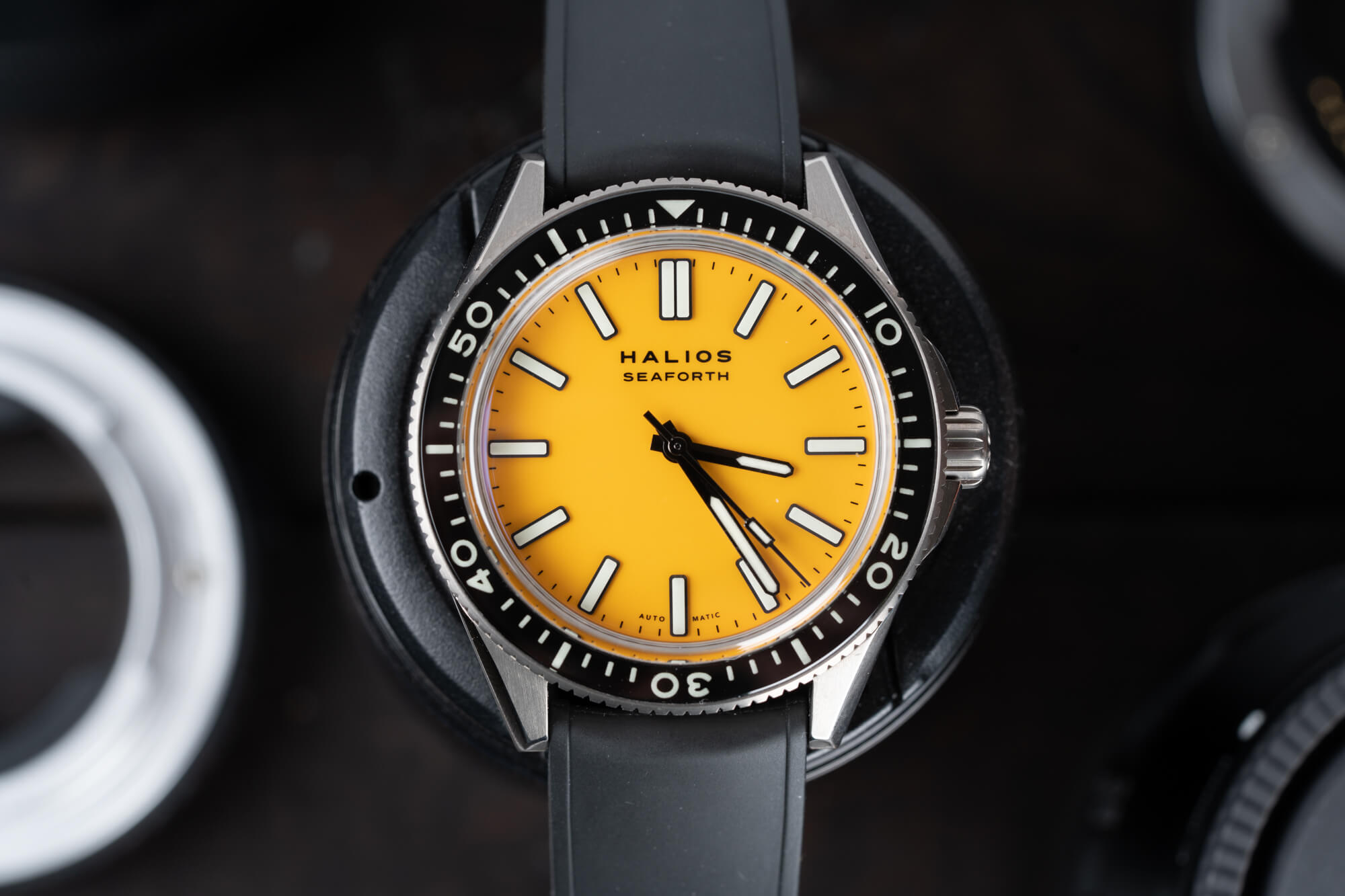 Balance and restraint are perhaps where the Halios truly proves its mettle. What we see over and over with microbrands is either derivative design, overdesigned watches that look identical to other micros or more popular models, or designs where someone didn’t know when or where to stop. It’s true in the case and the dial, where there may be nods to other classic designs (the dive bezel smacks of old Seamaster 300), but the watch is entirely its own.
Balance and restraint are perhaps where the Halios truly proves its mettle. What we see over and over with microbrands is either derivative design, overdesigned watches that look identical to other micros or more popular models, or designs where someone didn’t know when or where to stop. It’s true in the case and the dial, where there may be nods to other classic designs (the dive bezel smacks of old Seamaster 300), but the watch is entirely its own.
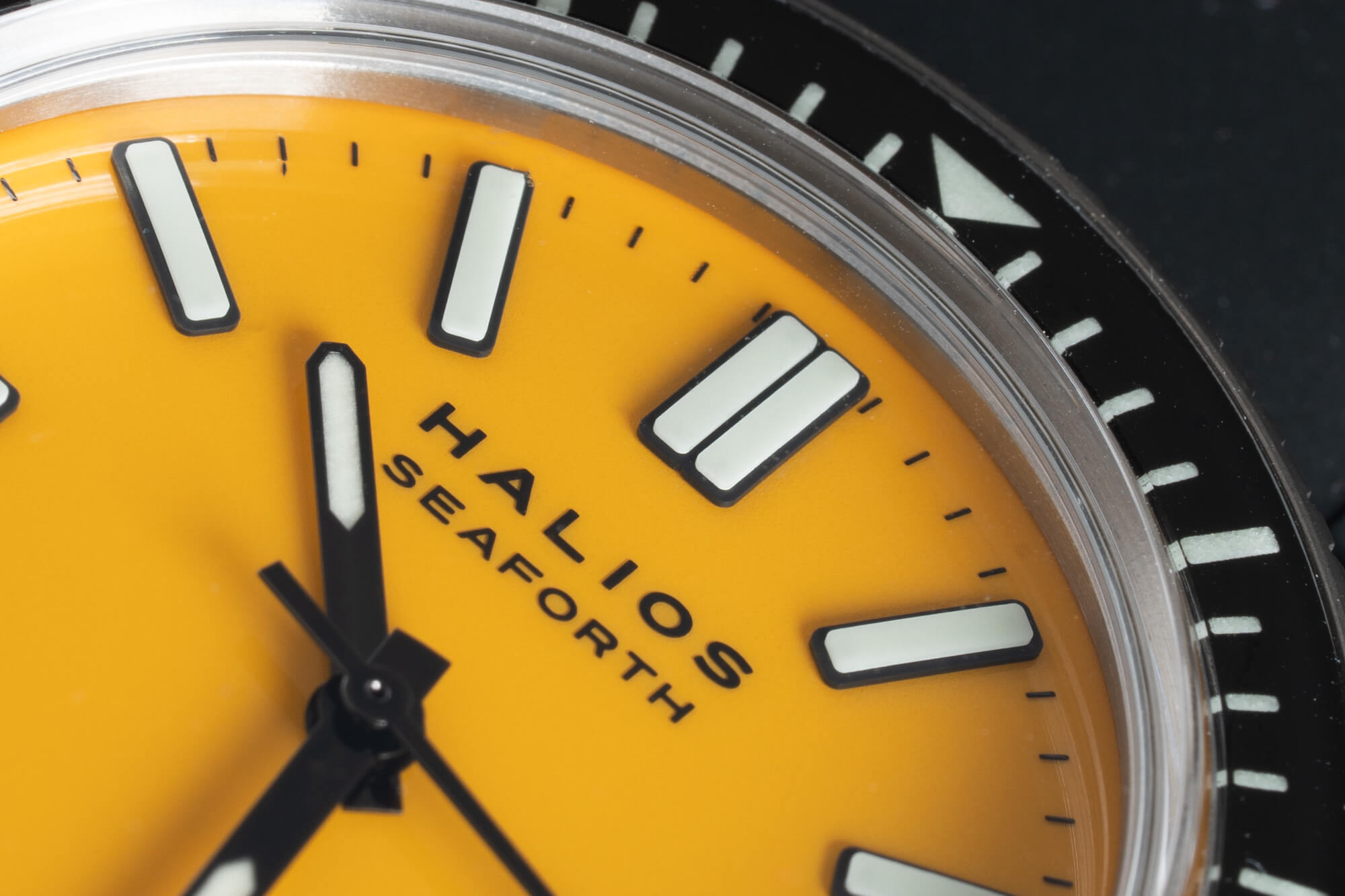 The layout and dial design remain the same, though the dial options have changed. For the Gen 4, you can only choose from Pastel Blue (one of the original colors) or a bright and cheery Bahama Yellow (pink was an option early on but doesn’t appear to be available any longer). Both are rendered in lacquer finish, which offers a subtle glossiness that doesn’t shine too brightly nor sit too dully. The lumed baton indices, including the double baton at 12 o’clock, have been an element of Halios watches for over a decade. These now are made from super bright, molded 3D Super-LumiNova.
The layout and dial design remain the same, though the dial options have changed. For the Gen 4, you can only choose from Pastel Blue (one of the original colors) or a bright and cheery Bahama Yellow (pink was an option early on but doesn’t appear to be available any longer). Both are rendered in lacquer finish, which offers a subtle glossiness that doesn’t shine too brightly nor sit too dully. The lumed baton indices, including the double baton at 12 o’clock, have been an element of Halios watches for over a decade. These now are made from super bright, molded 3D Super-LumiNova.
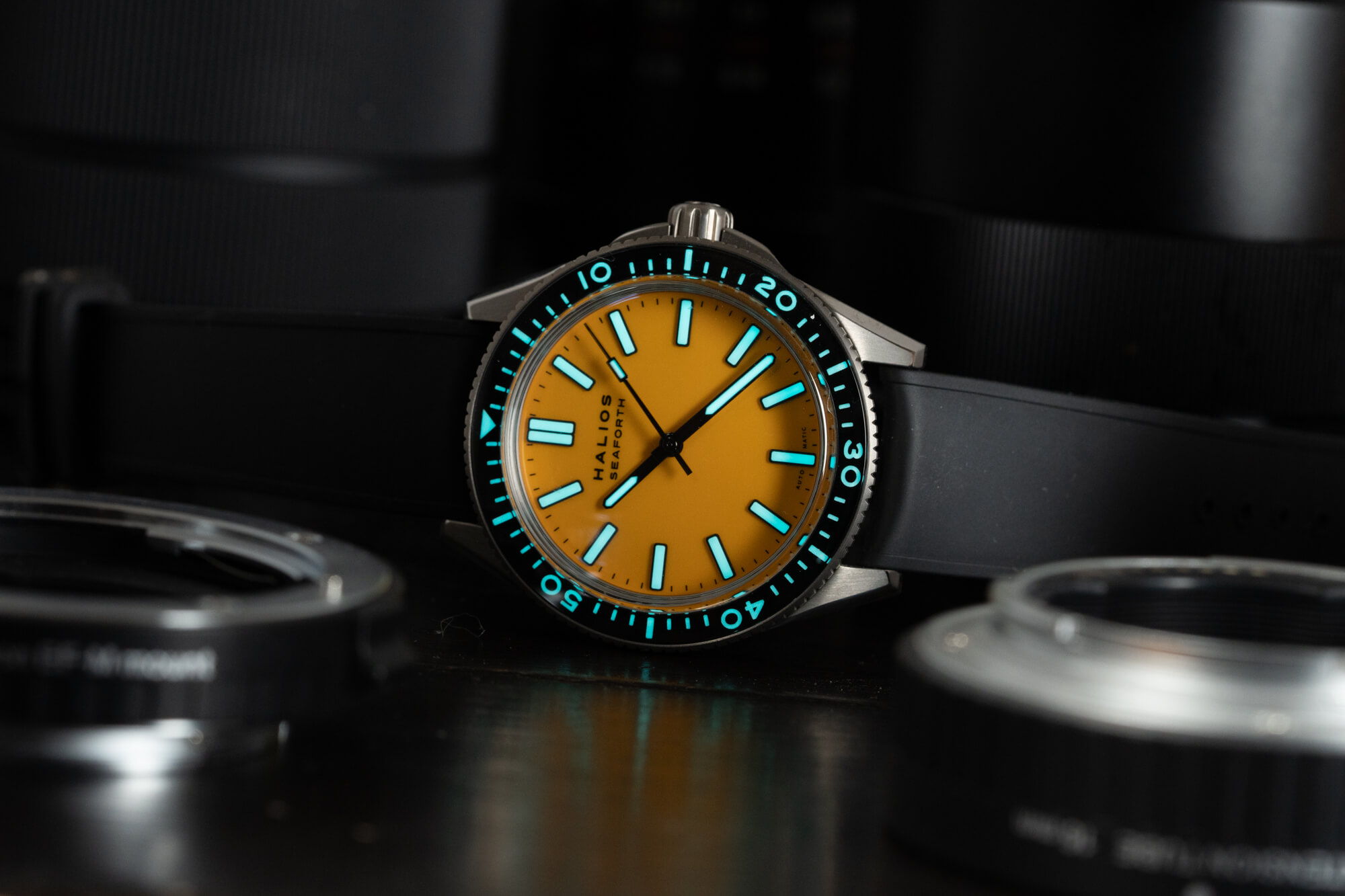 One criticism of the Seaforth in all its iterations is that it doesn’t take chances, or that it’s not a bold watch. Aside from being at the forefront of bringing color back to watches (pastel dials basically didn’t have a market until the original Seaforth in Pastel Blue), the whole design is exacting in its restraint. These aren’t statement pieces, though. Rolex has made an entire business out of making watches that don’t take chances, and while I’d argue the Seaforth is a bit more daring than most Rolexes, both Rolexes and the Seaforth are so good precisely because they are so straightforward. Like with Rolex, a single element never ends up standing out on the Seaforth because everything is done so well and with an eye for balance. There are no gimmicks or flourishes here.
One criticism of the Seaforth in all its iterations is that it doesn’t take chances, or that it’s not a bold watch. Aside from being at the forefront of bringing color back to watches (pastel dials basically didn’t have a market until the original Seaforth in Pastel Blue), the whole design is exacting in its restraint. These aren’t statement pieces, though. Rolex has made an entire business out of making watches that don’t take chances, and while I’d argue the Seaforth is a bit more daring than most Rolexes, both Rolexes and the Seaforth are so good precisely because they are so straightforward. Like with Rolex, a single element never ends up standing out on the Seaforth because everything is done so well and with an eye for balance. There are no gimmicks or flourishes here.
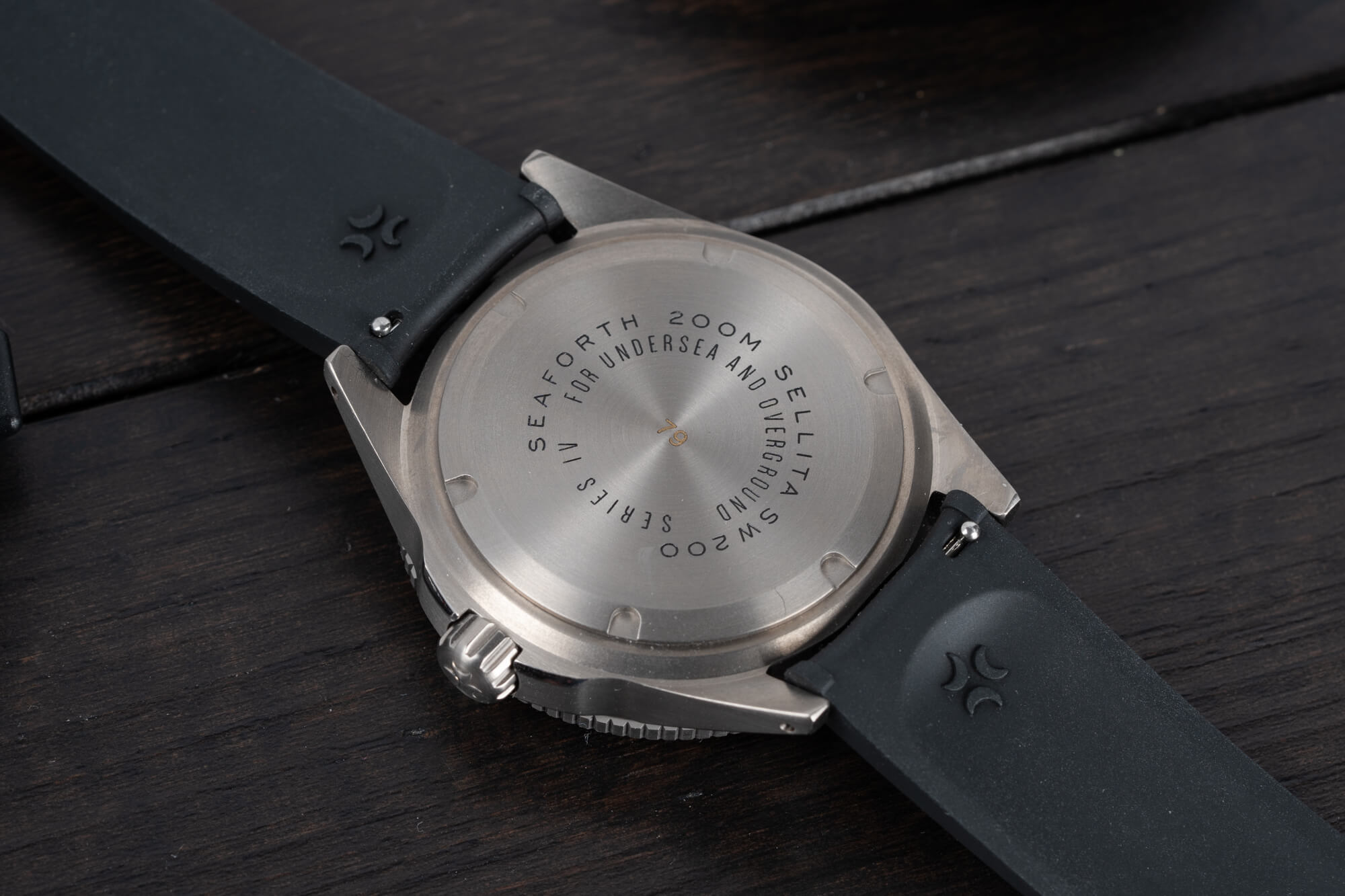 When the Seaforth was first introduced in 2017, it featured a Miyota 90S5 movement. The second and third generations featured the ETA 2824-2, the latter for which the brand found a workaround to swap out the set lever and get rid of the phantom date position in the crown for the dateless models. Now, the Seaforth is equipped with the ubiquitous Sellita SW200-1, which runs at 28,800 vph with a power reserve of 41 hours. Hiding under the screw-down case back, the movement and its predecessors are more interesting for how neatly they trace the arc of microbrand watch evolution. Miyota was and remains the easiest place to start for a high quality microbrand, but several years ago, ETA was even more desirable and actually accessible. Now, micros looking to use a Swiss movement have several choices outside of ETA. These brands will most often go with Sellita, which is accessible, reasonably priced, and can offer customization that other manufacturers don’t.
When the Seaforth was first introduced in 2017, it featured a Miyota 90S5 movement. The second and third generations featured the ETA 2824-2, the latter for which the brand found a workaround to swap out the set lever and get rid of the phantom date position in the crown for the dateless models. Now, the Seaforth is equipped with the ubiquitous Sellita SW200-1, which runs at 28,800 vph with a power reserve of 41 hours. Hiding under the screw-down case back, the movement and its predecessors are more interesting for how neatly they trace the arc of microbrand watch evolution. Miyota was and remains the easiest place to start for a high quality microbrand, but several years ago, ETA was even more desirable and actually accessible. Now, micros looking to use a Swiss movement have several choices outside of ETA. These brands will most often go with Sellita, which is accessible, reasonably priced, and can offer customization that other manufacturers don’t.
What has held the Halios Seaforth back, if anything, is the headache-inducing process of acquiring one. Every generation has been launched with a different sales method and every sales method has had at least one significant issue. That has scared off plenty of prospective buyers and perhaps harmed the reputation of the brand a bit, but brands and watches are extricable from their acquisition processes. Saying a popular brand is bad because it’s a hassle to buy one of its watches is like giving a restaurant a one-star review because they couldn’t seat you when you went on a Friday night without a reservation. For the Seaforth IV, there’s yet another sales approach: a lottery system. While orders are on hold right now to catch up on assembly, you can send the brand an email to get on the list for the lottery, which will hopefully open back up soon (between you and me, if you’re especially keen, I’ve heard repeated emails over several months don’t hurt).
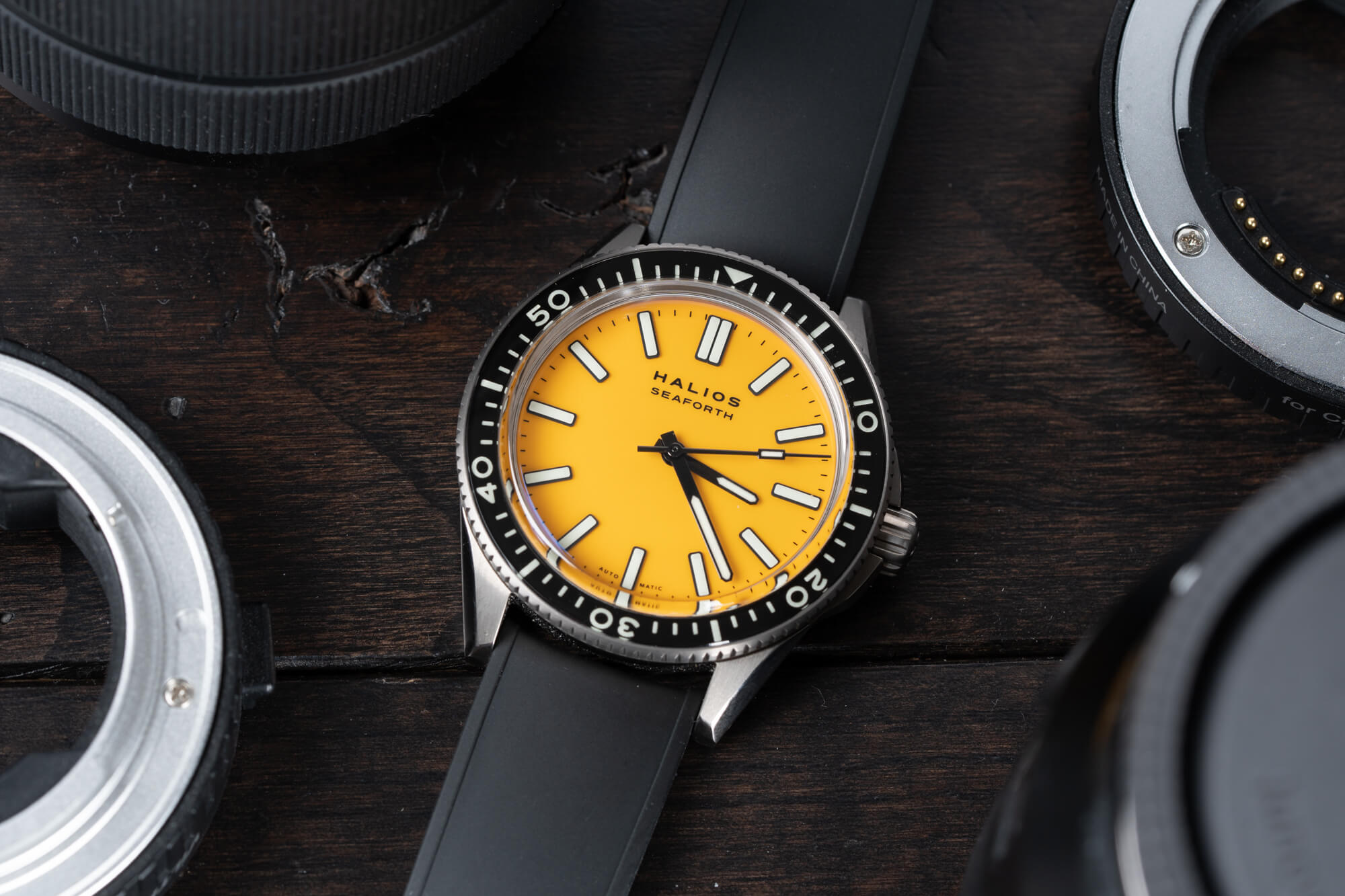 Demand for the Seaforth may be waning, though. There simply doesn’t seem to be as much chatter and excitement this time around, and I think it’s fair to say the Seaforth hit its peak with the third generation. But its status as an icon has been irrevocably achieved: When it was released and for several years thereafter, no other original model from a microbrand experienced as high demand or caused such fervor—and frustration—as the Seaforth, and very few have come close since (Kurono comes to mind, as does Ming to an extent).
Demand for the Seaforth may be waning, though. There simply doesn’t seem to be as much chatter and excitement this time around, and I think it’s fair to say the Seaforth hit its peak with the third generation. But its status as an icon has been irrevocably achieved: When it was released and for several years thereafter, no other original model from a microbrand experienced as high demand or caused such fervor—and frustration—as the Seaforth, and very few have come close since (Kurono comes to mind, as does Ming to an extent).
The Halios Seaforth IV is priced at $735 USD with a fixed bezel and $775 USD with a rotating bezel. If you’re eager to get one faster, expect to pay a premium, as Halios is one of a few brands (and even fewer microbrands) that not only hold their value, but appreciate. For more information, please visit the brand’s website.

